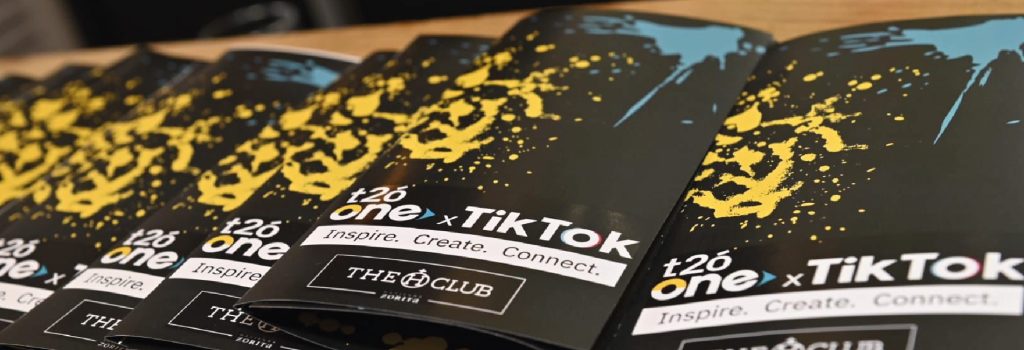2025 is shaping up to be a key year for the consolidation of new digital trends in the consumer sector. The main turning point will occur in the evolution of the relationship between brands and consumers, as in the current context, where consumer demands continue to grow, many companies have been forced to quickly adapt to the various challenges of constant change in the market. In this regard, digital transformation remains a fundamental pillar, but in this case, it is accompanied by a growing focus on sustainability and social responsibility. Various technologies, such as Artificial Intelligence, advanced automation, and the metaverse, are redefining user experiences toward more personalized attention. Furthermore, the use of more eco-friendly and ethical practices during digital processes has become an essential priority for competition to carve out a place in the market.
Artificial Intelligence remains a key pillar in the sector, as it allows brands to optimize workflows and personalize shopping experiences. It also helps reduce food waste by up to 30%. On the other hand, automation and robotics are transforming the operations of large supermarkets and retail chains, enabling the automation of price labeling and other processes.
As automation advances in the physical world, the metaverse is emerging as a key player in the consumer sector, enhancing consumer engagement through interactive simulations.
Another technology with a significant impact will be 5G, which will allow users to access services and content from anywhere, improving the relationship between brands and increasingly demanding and responsible consumers.
Main Digital Trends in the Consumer Sector
- Artificial Intelligence
Artificial Intelligence (AI) has proven to be a powerful tool that directly impacts the entire consumer chain. With the advancement of technologies, AI has become an indispensable ally for both consumers and retailers, enhancing efficiency in purchasing decisions and offering more personalized solutions.
One of the key aspects of AI in the consumer sector is its ability to intelligently manage the pantry. Through algorithms that analyze purchase history, eating habits, and personal preferences, AI-based applications can offer suggestions on what products to buy and when to do so. This not only reduces food waste but also optimizes savings by helping consumers take advantage of the best available offers and discounts.
A clear example of AI’s impact in the consumer realm can be seen in the trial of AI-powered shopping carts, which allow customers to automatically calculate the total price of their purchase. Undoubtedly, these kinds of innovations are transforming the way we shop, increasing convenience and boosting savings.
In addition to optimizing the logistics of shopping, AI is having a notable impact on the personalization of consumption, thanks to systems that help consumers not only find the products they need but also predict future household needs, generating tailored recommendations for each shopper.
Without a doubt, Artificial Intelligence is profoundly transforming consumption—not only in how we shop but also in how we manage our homes—aiming to optimize spending and provide personalized recommendations. From smart shopping carts to virtual assistants suggesting what foods to buy, AI is improving efficiency and the consumer experience at every stage of the process, helping families save and make more informed purchasing decisions.
- Virtual Reality
Virtual Reality (VR) is transforming the consumer landscape, offering users experiences that go beyond simply acquiring products. We are at a point where consumers seek deeper emotional connections with brands, and VR becomes a powerful tool aimed at building lasting bonds.
Among the main benefits of Virtual Reality is its ability to immerse the consumer in an interactive and personalized shopping experience, playing a fundamental role in personalization and the creation of interactive experiences in the retail and commercial refrigeration sectors.
Without a doubt, Virtual Reality has become a key strategic tool for brands looking to create unforgettable experiences and generate lasting bonds with their consumers. It provides interactive and personalized environments where companies not only enhance the shopping experience but also forge deeper, more meaningful emotional connections with their customers.
Virtual Reality (VR) is transforming the consumer landscape, offering users experiences that go beyond simply acquiring products. We are at a point where consumers seek deeper emotional connections with brands, and VR becomes a powerful tool aimed at building lasting bonds.
Among the main benefits of Virtual Reality is its ability to immerse the consumer in an interactive and personalized shopping experience, playing a fundamental role in personalization and the creation of interactive experiences in the retail and commercial refrigeration sectors.
Without a doubt, Virtual Reality has become a key strategic tool for brands looking to create unforgettable experiences and generate lasting bonds with their consumers. It provides interactive and personalized environments where companies not only enhance the shopping experience but also forge deeper, more meaningful emotional connections with their customers.
- Big Data Analytics
Another technology that has become essential for companies to understand and anticipate market demands is Big Data Analytics. Thanks to its ability to collect and analyze large volumes of data, organizations can gain insights into different consumption patterns.
One of the most prominent applications in this sector is its ability to respond quickly to market changes. This gives brands the ability to interpret data in real-time, allowing them to adjust their offerings and improve the availability of key products based on demand.
Additionally, the use of Big Data Analytics helps improve efficiency and respond to customer needs more swiftly, enabling companies to better understand consumer behavior and adjust their operations in real-time.
In summary, Big Data Analytics is a key tool for consumer companies to understand and anticipate market dynamics, allowing them to personalize offers and enhance the shopping experience. It also enables companies to segment their customers with precision, offering more relevant promotions and products.
- Robotics
Robotics is revolutionizing the consumer industry, transforming both process optimization and the shopping experience for consumers. Thanks to advancements in automation and robotics, companies are achieving greater efficiency in their operations, while customers enjoy faster, more convenient, and personalized services.
One of the most notable applications of robotics in the consumer sector is its ability to optimize processes in retail and logistics. A recent example is the partnership between Symbotic and Walmart, where Symbotic integrates robots that autonomously and accurately organize, classify, and manage inventory, optimizing operations and improving warehouse efficiency. Additionally, robotics is also creating new shopping experiences.
In summary, from improved inventory management to the introduction of robots in tasks, robotics offers consumers more hygienic, efficient, and autonomous experiences, while also being innovative, comfortable, and personalized.
- Geolocation, 5G, NFC, and advanced vending.
The integration of technologies such as geolocation, 5G, NFC, and advanced vending is revolutionizing the consumer industry, offering a more personalized, secure, and efficient experience. These innovations allow for optimizing both product management and consumer interaction, connecting brands with their customers in smarter and more dynamic ways.
In short, the integration of geolocation, 5G, NFC, and advanced vending is marking a new era of personalization. These technologies create a smoother, faster, and more secure shopping experience for customers, leading to greater consumer satisfaction.
What will you find in this report on «Digital Trends in the Consumer Sector 2025»?
In addition to breaking down in detail all the trends in the industry and their use cases, this report features contributions from Ana Cuevas, Commercial Mix Director at Eroski Group; Maite Delgado, Head of Marketing at Unide Corporativa; and Daniela Pontecorvo, Chief Marketing Officer at Costa d’Oro. These experts have shared their insights on the following issues:
- The use of advanced data analytics to gain insights into consumer behavior and improve efficiency in marketing campaigns.
- The incorporation of advanced analytics in different professions.
- The balance brands must strike between personalization and consumer privacy.
- The main challenge the sector faces with this transformation.

Want to discover how all these trends are being put into practice? We’re sharing some use cases from major companies worldwide. Keep reading and download the full report for free!
1./ Artificial Intelligence: a tool with a great impact across the entire chain.
- Auchan: AI to plan the pantry and optimize savings.
- Coles: Smart shopping carts that avoid queues in supermarkets.
- QI: A virtual assistant finds the perfect cheese for each consumer.
- BM: Optimizing its supply chain thanks to AI.
2./ VR/AR: unforgettable experiences to create lasting bonds.
- Tesco: Transforming the shopping experience with AR.
- Imbera Colombia: Virtual «try-on» for commercial refrigerators.
- Ocado: Smart QR codes to promote recycling.
- Coca-Cola: Marvel superheroes come to life on their cans.
3./ Big Data Analytics: the key to understanding and responding to the market.
- Unilever: Leveraging data at all levels.
- Galletas Gullón: When tradition meets innovation.
- Grupo Costa: Big Data to improve animal welfare.
- Sainsbury’s: How the company predicts product replenishment on its shelves.
4./ Robotics: process optimization and a new shopping experience.
- Ghost Kitchen Brands: A robot bartender serves your food after you make your purchase.
- Symbotic: A million-dollar investment to integrate robotics with AI at Walmart.
- Lider: The world’s first automated deli slicer.
- Gadis: A robot that cleans floors while asking not to be touched.
5./ Other trends: geolocation, 5G, NFC, and advanced vending
- Consum: NFC for a quicker, contactless purchase.
- Cerveceros de España: Labels that warn about responsible consumption.
- Supermercados Mas: Live video shopping thanks to 5G in their stores.
- Fresh Vending México: Smart lighting in their streets.
Download the full report «Digital Trends 2025 | Consumer Sector» for free here:
If you want to stay updated with the latest trends from other sectors, take a look at all the reports from t2ó Industry.



